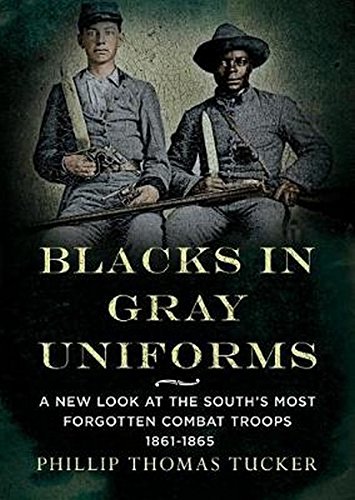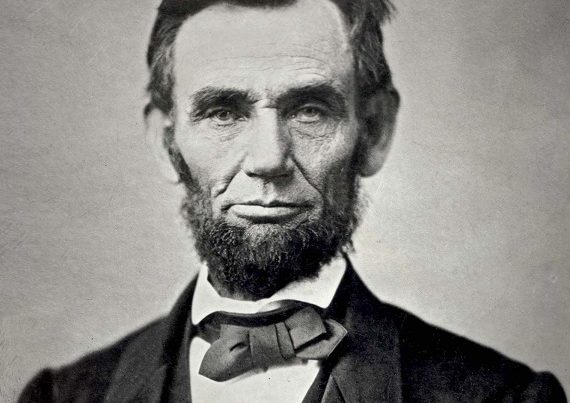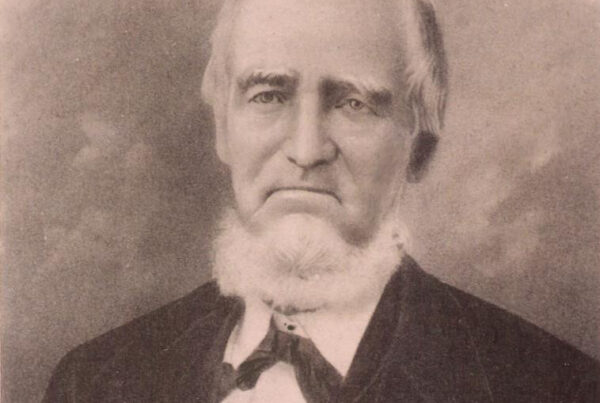
A Review of Blacks in Gray Uniforms (Arcadia, 2018) by Phillip Thomas Tucker
South Carolina Confederate history is my area of research, so I was interested to come across the book Blacks in Gray Uniforms, which gives information on some black Confederate soldiers from the Palmetto State, and I wanted to bring it to the attention of the readers of this blog. Phillip Thomas Tucker is a historian who “has long specialized on the most forgotten and overlooked subjects of the Civil War.” In his introduction, he states that there is ample evidence in the historical record, especially in primary sources, to establish that there were thousands of black Southerners, free and slave, who served in the Confederate armies in combat roles. He estimates this number to be between three and six thousand, besides many thousands more blacks who participated in the war as body servants, teamsters, etc. Tucker also touches on the role of black soldiers in the Revolution and other conflicts in which Americans fought during the 18th and 19th centuries.
Further in the introduction, Tucker expressed his view that the South’s cause was the defense of slavery. He also emphasizes the fact that he consulted mostly primary documentation in researching his subject, such as the letters of soldiers, while dismissing many post-war Confederate writings which depict the “’Lost Cause’ myth of the ‘happy slave’ as created by generations of Southern writers and historians in an attempt to prove that slavery was a benign institution.” Yet later in the book, when speculating about reasons that blacks fought for the South, he acknowledges that there was “often familial-like feeling that existed between these white soldiers and slaves, both body servants and those slaves who remained at home,” a fact borne out by soldiers’ correspondence and other original sources. He goes on to state:
[S]ome Confederate soldier letters, from officers to enlisted men, have revealed the hidden, but true, depths of these personal and familial-like bonds that existed between black and white. Contrary to the Nazi-like stereotype permanently attached to white Rebel soldiers by today’s liberals of the politically correct crowd and as revealed in countless soldiers’ letters and lives, these Southerners were largely and in general decent God-fearing people from a religious rural society, and they possessed core Christian values that they took seriously and lived by as much as possible.
An example of the “forgotten bonds” that existed between master and slave is given in the person of Edgeworth Bird, a Georgia planter who urged his family to take care of the servants “decently and with kindness in his absence,” and wrote about them fondly in his letters home. Other examples mentioned are James A. Tillman of Mississippi, and Tally N. Simpson of South Carolina (whose wartime letters were published in 1994 as Far, Far from Home).
Tucker devotes a section to the “Free Mulattoes” who supported the Confederate cause. He notes that in Charleston, South Carolina, a group of free black leaders submitted a “glowingly patriotic” memorial to the mayor to offer their services in the defense of the state. A similar document was sent to the mayor of Columbia, South Carolina. John Wilson Buckner, a free man of color, enlisted in the 1st South Carolina Artillery and was “one of the forgotten black defenders of Fort Wagner, South Carolina, and he fell wounded in the strategic bastion’s defense on July 12, 1863.”
The author explores the reasons that free blacks and slaves would have been motivated to support the Confederate cause, and includes among them the “forgotten abuse of blacks by liberators in blue uniforms.” Tucker elaborates on this one neglected reason as follows:
Primary documentation and evidence has revealed that black women and children were often abused by Union soldiers to a degree that has suggested that many Yankees were not motivated to fight for the freeing of slaves because of a prevalent northern racial hostility toward blacks that was fully exhibited in cruel ways.
Readers are reminded in the book’s epilogue that the victors always write the histories of a conflict, and they tend to leave out facts that do not serve their purposes. By bringing out the facts about black Confederate soldiers, and giving them long overdue recognition, Tucker has done a good service for the historical record, although he acknowledges that his book presents “what is in truth only the proverbial tip of the iceberg in regard to the remarkable story of the thousands of Black Confederates who fought with great bravery on the battlefield from 1861-1865.”






This is one of the most sensitive subjects out there that when mentioned will cause a lot of contempt to those of us attempting to shine a light on our history.
As a matter of fact I just had my account being censored on the “Free Speech Platform” GETTR for making such a post and or post that were not well received by my fellow conservatives. To mention that Blacks served in the Confederacy is sacrilegious to many even worthy of the death penalty by some.
Yet it’s true, not only in SC but many of the Southern states who even had the support of our local Native Tribes who also saw Lincoln as a threat to their ways of life.
But you will never read about them in our history books. The tribes that sided with the Confederacy were classified by the U.S. government as the Five Civilized Tribes, consisting of the Cherokee, the Creek, the Seminole, the Chickasaw, and the Choctaw. The Choctaw, Chickasaw, and Cherokee were the tribes that provided the most support to the Confederacy. But rarely if ever are they mentioned. But perhaps the reason for that is because of Lincolns campaigns to genocide many of the Native tribes using his two monsters Sheridan and Sherman to annihilate them and any Southerners that got in their way.
Love your articles and thank you so much for getting this information front and center for those who still cherish Historical truths, whether good or bad they are regardless our history.
Gods speed
Jeffrey
You only have to read UP FROM SLAVERY. BT Washington said it only 8 pages deep in his autobiography. Autobiography means “written by the author about himself”…there is no chance of misinterpreting his words. He wrote them. It’s not hard to find…as a matter of fact, the book is FREE online EVERYWHERE.
It reads something like this…IN ORDER TO PROTECT THE WOMEN AND CHILDREN LEFT BEHIND WHEN THE WHITE MEN WENT AWAY TO WAR, THE SLAVES WOULD HAVE LAID DOWN THEIR LIVES. I may be off by a word or two.
Examine the Confederate monument at Arlington. You will see a statue designed by a Jewish sculptor depicting a white soldier handing his baby to a female, black slave (we assume). Let me guess…THE REVISIONISTS WERE ALIVE AND WELL IN THE EARLY 1900s…yes, they were…but so far they haven’t been able to recall all of the copies of UP FROM SLAVERY yet. I would expect this statue to be the most-hated of the most-hated. The statue also depicts a black man in the military formation marching off to war. Very disturbing for the brain-washed among us.
Harper’s Weekly magazine has a very nice story…it was on display at the Old Vicksburg Courthouse Museum…the magazine depicts black Rebel sentries seen through a field glass…I bet you can find it…if you can’t, you can try here:
https://www.loc.gov/pictures/item/93505867/
Library of Congress…for shame…allowing truth to out.